
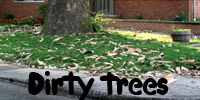
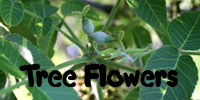
|
Welcome
to bobklips.com, the website of Bob Klips, a plant enthusiast living in
Columbus, Ohio.

The arrow shows where we parked and walked in along the Creek. We
scaled some bluffs in the woods. There is some steep relief, a
sandstone bluff, where mosses and lichens are abundant..
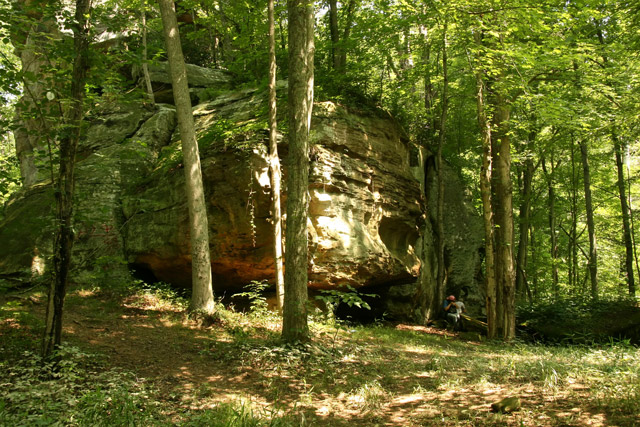
Sandstone rock outcrop near Symmes Creek, Gallia County, Ohio, June 21,
2008.
One
of the more
intriguing mosses growing here is Diphyscium foliosum
(family Diphysciaceae), seen on soil at the base of the bluff,
in
fairly dense shade. Unlike most mosses, which have their spore capsules
elevated on a thin stem-like stalk, the capsules of Diphyscium
are
nearly stalkless, simply sitting practically on the
ground surrounded by a few small leaves. According to Howard
Crum
in Mosses of the Great Lakes Forest, the sloping
shape of the
tilted capsules causes spores to be expelled in little puffs when the
capsules get pelted by raindrops. Evidently the spores can fly two
inches in this manner, accounting for the common name "powder puff
moss."
Crum also mentions that the great brologist William Steere has said
that Diphyscium looks like scared rabbits in the
grass.
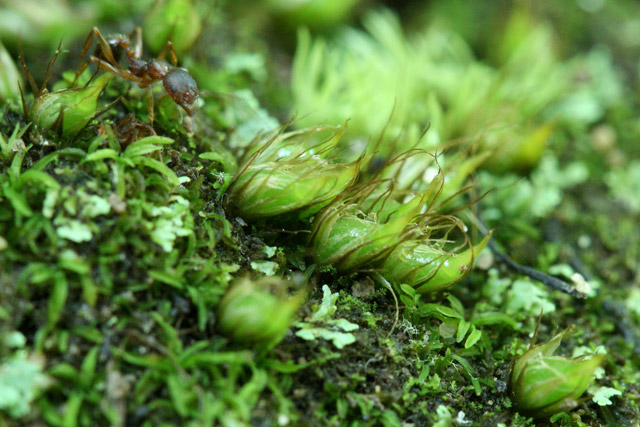
Growing on the bark of a small slanted dead wood sapling is a lichen
that was pointed out by OMLA member Ray Showman. Ray is a
lichenologist, co-author with Don Flenniken of The
Macrolichens of Ohio, and he identified it as Parmotrema
hypotropum, the powdered ruffle lichen.
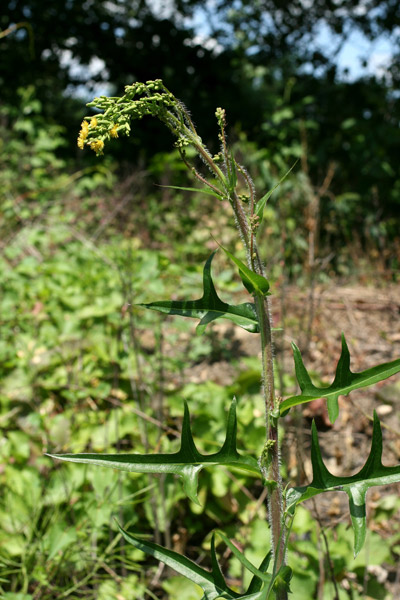
Unidentified lettuce (Lactuca sp.)
at Trella Romine Green Camp Prairie, Marion County, June 19, 2008.
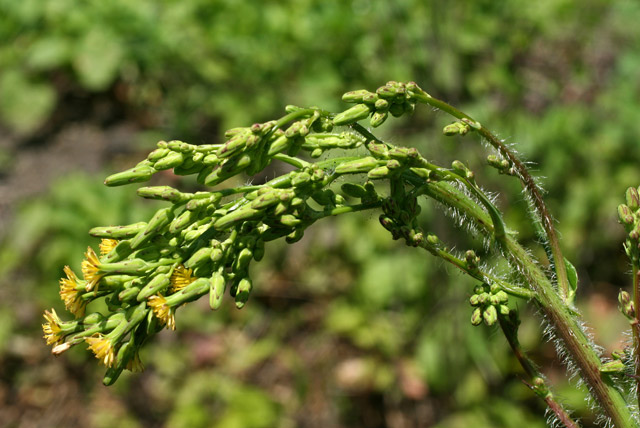
Inflorescence of unident. Lactuca, June 19, 2008.
It's
evident from the
flower heads this is
a member of the Lactuceae (Cichorieae) tribe of the Asteraceae, the
well-marked group whose members bear only strap-shaped
(ligulate)
flowers and often have milky juice. Familiar members of this tribe
include chichory (Cichorium) , dandelion (Taraxacum),
goat's-beard (Tragopogon), hawkweed (Hieracium)
and lettuce (Lactuca), among a total of 14 genera in
Ohio. Although the genera key out in T. Richard Fisher's (1988) The
Dicotyledonae of Ohio Part 3 --Asteraceae
using technical characters of the pappus and achenes, it seems from
overall form --it's a tall yellow flowered plant with leaves
distributed along the stem and it isn't a
sow-thistle (Sonchus) --that this must be Lactuca,
the lettuce genus.
Among our 6 species of Lactuca, only
four have yellow flowers. According to the descriptions in
Fisher (1988), three of the four --L.
canadensis, L. serriola and L.
saligna --have glabrous (non-hairy) stems, seeming to
leave only one species, L. hirsuta
as a possibility.
Lactuca hirsuta is a pretty intriguing
possibility. It's a
rarity in Ohio, only showing up in 4 counties on the dot-map in
Fisher's book. Three of the counties are in southern Ohio and the other
is up along Lake Erie in the northeastern part of the State. (Marion is
in north-central Ohio.) The L. hirsuta
description in Fisher is brief: "Biennial to 3.5m tall
(!)...is that a misprint? I can't imagine an 11-foot tall
lettuce plant! ...stems
sparsely villous; leaves as in L. canadensis except copiously pubescent
on midribs beneath and sparsely so on surface. Rare in Ohio, where it
occurs in fields, usually near woodlands. July-September.
I'm hoping that a friendly curator at the OSU Museum of Biological
Diversity who specializes in the Asteraceae (Hi Mesfin!!)
will look at this page and have an opinion about the plant. (Thanks,
Mesfin!).
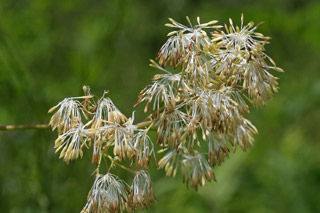 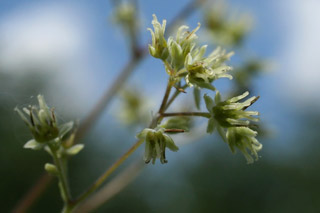
Young fruits of Thalictrum dasycarpum, June 19,
2008. Like many
other members of the buttercup family, Ranunculaceae, meadow-rue
flowers have an "apocarous gynoecium." Each flower includes several
wholly separate seed-producing units. Thereby, one flower produces
several fruits.
Canada anemone, Anemome canadensis, Trella Romine
Prairie, Green Camp, Ohio, May 19, 2008.
Canada anenome flower with pollen being grazed by caterpillar. Trella
Romine Prairie, June 19, 2008.
 Earlier observations ("back")
Earlier observations ("back")
|

